Building a Higher Education Area in Central Asia: challenges and prospects
Abstract
In recent years, for a variety of reasons, higher education has begun to be considered much more frequently than previously in terms of ‘regions’, or ‘macro-regions’. Although for decades countries sharing some characteristics, or perceived as geographically or culturally closely related to each other, have promoted forms of cooperation between their higher education institutions (with varying degrees of success), it is now widely accepted that to ‘count’ on the world stage, it is useful for single countries, and especially for smaller countries, to work together with a view to making their systems better able to interact and hopefully to promote, increase and make visible their merits. Of course, in higher education as in many other fields, the regions or macro-regions are not defined once and for all, but are the result of stronger or weaker ad hoc groupings which take into account different factors in different contexts. Central Asia is one such potential region: it does not have unquestioned boundaries, but like other macro-regions, and more so than most, it can be understood and constructed in different ways. A current shared understanding of ‘Central Asia’ is that it is formed by the 4 ex-Soviet Republics of Central Asia (Kyrgyzstan, Tajikistan, Turkmenistan and Uzbekistan), plus Kazakhstan. Over the last decade the possibility of building a Higher Education Area in those five republics has been explored, and a large-scale project which uses Tuning methodology to this end is under way. This project, called TuCAHEA (“Towards a Central Asian Higher Education Area: Tuning Structures and Building Quality Culture”), has already elaborated a Central Asian list of Generic Competences and eight Subject Area Groups have formulated their Reference Points and Guidelines. The five Ministries of the five countries have signed a Communiqué indicating their intention to collaborate more closely; a pilot student mobility scheme is soon to start. This article explores the Central Asian experience as an example of the construction of a Higher Education area in Asia, and looks at what the future appears to promise, in terms both of challenges and of positive developments.
Published online: 20 December 2014
Downloads
References
Abazov, Rafis. Palgrave Concise Historical Atlas of Central Asia. (New York: Palgrave Macmillan, 2008).
Adamkulova, Chinara. “Influence of the Tempus Programme in the reformation of higher education”, Proceedings of the Tempus Regional Conference “Higher Education in Central Asia: Ongoing Reforms and Future Perspectives”, Tashkent, 22-23 November 2004, Aziza Abdurakhmanova, Claire Morel, Heather Mowbray, and Shokhida Safarova eds. http://eacea.ec.europa.eu/tempus/doc/tashkent_en.pdf, 68-80.
Bologna Process Secretariat. First Bologna Policy Forum, Louvain-la-Neuve, 29 April 2009: http://www.ond.vlaanderen.be/hogeronderwijs/bologna/forum/ Bologna.kg Tempus project (Tuning Kyrgyzstan). http://www.bolognakg.net/default2.html.
Bologna.kg2 Tempus project (Tuning Kyrgyzstan, phase 2). http://www.bolognakg.net.
Council of Europe (COE). European Cultural Convention: http://conventions.coe.int/Treaty/Commun/QueVoulezVous.asp?CL=ENG&NT=018.
_____. European Cultural Convention, Kazakhstan: https://wcd.coe.int/ViewDoc.jsp?Ref=CM/Del/Dec(2010)1074/7.3&Language=lanEnglish&Ver=original.
_____. European Cultural Convention, signatories: http://conventions.coe.int/Treaty/Commun/ChercheSig.asp?NT=018&CM=&DF=&CL=ENG.
_____. Resolution 1526 of 2006: http://assembly.coe.int/Main.asp?link=/Documents/AdoptedText/ta06/ERES1526.htm.
Erasmus Archipelago of Human and Social Arts and Sciences (HUMAN PLUS). http://www.archhumannets.net.
European Commission. Erasmus+ Programme Guide 2015, version 3 (2015): 14/11/2014 http://ec.europa.eu/programmes/erasmus-plus/documents/erasmus-plus-programme-guide_en.pdf.
_____. Higher Education in Participating Countries: http://eacea.ec.europa.eu/tempus/participating_countries/.
_____. Higher Education in Turkmenistan, updated to July 2012: http://eacea.ec.europa.eu/tempus/participating_countries/reviews/Turkmenistan.pdf.
_____. Education, Audiovisual and Culture Executive Agency (EACEA), Network of Higher Education Reform Experts: http://eacea.ec.europa.eu/tempus/programme/heres_en.php.
European Communities. Tempus Tacis Project Management Handbook, Marek H. Dominiczak ed. (Luxembourg: Office for Official Publications of the European Communities, 1996), http://eacea.ec.europa.eu/tempus/doc/tacishandbook_en.pdf.
European Higher Education Area (EHEA). http://www.ehea.info/.
_____. BFUG Chairs and Vice-Chairs. http://www.ehea.info/article-details.aspx?ArticleId=8.
Fornai, Francesco. “The UZHELTH Experience: exploring communalities and differences in Tuning Public Health related disciplines in Uzbekistan”, Tempus: 20 years of programme activities in Uzbekistan, Erasmus+ Office in Uzbekistan ed., Tashkent 2014, 168-175. http://tempus.uz/download/19.12.2014_tempus_20_years_of_programme_activities_in_uzbekistan.pdf.
Galán-Palomares, Fernando Miguel, and Kevin Guillaume. Europe at the Global Edge, articulating the global dimension of EHEA through recognition (Bucharest: Bologna Process Researchers Conference 2014, forthcoming, http:// fohe-bprc.forhe.ro/papers/).
Golden, Peter B. Central Asia in World History (Oxford: Oxford University Press, 2011).
Guidi, Alessandra, Shavkat Hasanov, and Ann Katherine Isaacs. Minutes of the Joint UZHELTH-TuCAHEA meeting (Samarkand, 15-16 November 2014), unpublished.
Harvard University, Davis Center for Russian and Eurasian Studies. http://cesww.fas.harvard.edu/index.htm.
Isaacs, Ann Katherine, “The Bologna Process. A Geography of European Higher Education for the 21st century”. Almaty, Alatau, 5 April 2004. Unpublished.
_____. “An ECTS/’Tuning’ –based experiment in curriculum design by Kyrgyz Universities”, Proceedings of the Tempus Regional Conference “Higher Education in Central Asia: Ongoing Reforms and Future Perspectives”, Tashkent, 22-23 November 2004, Aziza Abdurakhmanova, Claire Morel, Heather Mowbray, and Shokhida Safarova eds. http://eacea.ec.europa.eu/tempus/doc/tashkent_en.pdf, 68-80.
_____. “TuCAHEA: A Regional Structural Tempus Project for creating a Central Asian Higher Education Area and contributing to the worldwide “Tuning Process”. Tempus IV in Uzbekistan 2013, National Tempus Office in Uzbekistan ed., Tashkent 2013, 293-303. http://www.erasmusplus.uz/files/downloads/book_tempus_iv_2013.pdf.
_____. “The Uzbek Contribution to Tuning Central Asia: the TuCAHEA Tempus Project for Creating a Central Asian Higher Education Area and the UZHELTH Project for Public Health in Uzbekistan”. Tempus: 20 years of programme activities in Uzbekistan, Erasmus+ Office in Uzbekistan ed., Tashkent 2014, 161-167. http://tempus.uz/download/19.12.2014_tempus_20_years_of_programme_activities_in_uzbekistan.pdf.
Kazakh-British Technical University. http://www.kbtu.kz/en/node/62.
Krygyz-Turkey Manas University. http://manas.edu.kg/index.php/manas-university/introduction.
Lewis, Martin W., and Kären E. Wigen. The Myth of Continents. A Critique of Metageography. (Berkeley and Los Angeles: University of California Press, 1997).
Lutfullayev, Pulatkhon. “TuCAHEA лойиҳасwнинг Ўзбекистон олий таълимида халқаро хамкорликни ривожлантиришдаги аҳамияти”, Tempus IV in Uzbekistan 2013, National Tempus Office in Uzbekistan ed., Tashkent 2013, 314-320. http://www.erasmusplus.uz/files/downloads/book_tempus_iv_2013.pdf.
Magna Charta Universitatum. http://www2.magna-charta.org/.
McCabe, Róisín, Philippe Ruffio, and Chiara Tiberi. The Main Achievements of the Tempus Programme in Central Asia 1994-2013 (Brussels: European Commission, Education, Audiovisual and Culture Executive Agency, 2014). http://eacea.ec.europa.eu/tempus/tools/publications_en.php#1.
Morrison, Alexander. Russian Rule in Samarkand 1868-1910: A Comparison with British India (Oxford: Oxford University Press, 2008).
Nurmatov, Dilshadbek. “Проект TuCAHEA как инструмент формирования культуры качества в системе высшего образовани в Центральной Азии”, Tempus IV in Uzbekistan 2013, National Tempus Office in Uzbekistan ed., Tashkent 2013, 304-308. http://www.erasmusplus.uz/files/downloads/book_tempus_iv_2013.pdf.
RHUSTE Tempus project. History and Culturology. Russian Tuning/ECTS-based educational models for the implementation of the Bologna Process in Human Sciences (Cheliabinsk State University: Cheliabinsk 2008). http://tuningacademy.org/wp-content/uploads/2014/02/RHUSTE_Booklet-for-the-Subject-areas-of-History-and-Culturology.pdf.
Roy. Olivier. The New Central Asia. The Creation of Nations. (New York, London: I.B. Tauris, 2000; reprint 2007: The New Central Asia. The Birth of Nations; French orig.: La Nouvelle Asie centrale ou la fabrication des nations (Paris: Editions du Seuil, 1997).
Russian Tajik (Slavic) University. http://www.rtsu.tj/rtsu/istoriya.
Smanaliev, Kynatbek, and Farida Ryskulueva. “Prospects of Development of the Higher Education in Kyrgyzstan and problems of joining the Bologna Process”, Proceedings of the Tempus Regional Conference “Higher Education in Central Asia: Ongoing Reforms and Future Perspectives”, Tashkent, 22-23 November 2004, Aziza Abdurakhmanova, Claire Morel, Heather Mowbray, and Shokhida Safarova eds. http://eacea.ec.europa.eu/tempus/doc/tashkent_en.pdf, 68-80.
Soucek, Svat. A History of Inner Asia. (Cambridge: Cambridge University Press, 2000 [2006, 7th printing]).
The World Factbook 2013-14. (Washington, DC: Central Intelligence Agency (CIA), 2014): https://www.cia.gov/library/publications/the-world-factbook/index.html.
TuCAHEA (Tuning Central Asia). www.tucahea.org.
Tuning Educational Structures in Europe (Tuning Europe. http://www.unideusto.org/tuningeu/).
_____. Final Report. Pilot Project — Phase I. (Bilbao and Groningen: University of Deusto Press, 2003).
Tuning project in Africa (Tuning Africa). http://www.tuningafrica.org/.
Tuning project in China (Tuning China). http://tuningchina.org/.
Tuning project in Georgia (Tuning Georgia). http://tuningacademy.org/tuning-georgia/?lang=en.
Tuning project in Latin America (Tuning Latin America). http://www.tuningal.org.
_____. CLAR. Latin American Reference Credit (Bilbao: University of Deusto Press, 2013). http://www.tuningal.org/es/publicaciones/cat_view/48-publications-in-english-books?start=15.
Tuning project in Lithuania (Tuning Lithuania). http://tuningacademy.org/tuning-lithuania/?lang=en.
Tuning project in Russia (Tuning Russia). http://tuningrussia.org/.
_____. Reference Points for the Design and Delivery of Degree Programmes in Education, Ivan Dyukarev, Arlene Gilpin and Evgeniya Karavaeva eds. (Bilbao: University of Deusto Press).
Tuning project in USA (Tuning USA). http://tuningusa.org/.
Umatova, Karligash. “Проект TuCAHEA: цели, пространство, участники, ожидаемые результаты”, Tempus IV in Uzbekistan 2013, National Tempus Office in Uzbekistan ed., Tashkent 2013, 309-313. http://www.erasmusplus.uz/files/downloads/book_tempus_iv_2013.pdf.
United Nations Educational, Scientific and Cultural Organization (UNESCO), Archive, entry for International Committee on Intellectual Cooperation (ICIC). http://biblio-archive.unog.ch/Detail.aspx?ID=408.
_____. International Bureau of Education (IBE). http://www.ibe.unesco.org/en/about-the-ibe/who-we-are/history.html.
_____. History of Civilizations of Central Asia, vol. VI: Towards the contemporary period: from the mid-nineteenth to the end of the twentieth century, Chahryar Adle ed., Madhavan K. Palat and Anara Tabyshalieva co-eds. (Paris: UNESCO Publishing, 2005). http://unesdoc.unesco.org/images/0014/001412/141275e.pdf.
United Nations. Composition of macro geographical continental) regions, geographical sub-regions, and selected economic and other groupings. http://www.cnbc.com/id/102166864.
_____. General Assembly. 90th plenary meeting, 12 December 1995, resolution A/ RES/50/80, 11 January 1996. http://www.un.org/en/ga/search/view_doc. asp?symbol=A/RES/50/80&Lang=E.
United States Census Bureau, International Data Base. https://www.census.gov/population/international/data/idb/informationGateway.php.
UZHELTH Tempus Project (Tuning Public Health in Uzbekistan). http://www. uzhelth.org.
van der Meer, Ingrid and Ann Katherine Isaacs, Minutes of the Fourth TuCAHEA Plenary Conference and Working Meeting (Samarkand, 14-15 November 2014). Unpublished.
World Bank, GDP data for 2013. http://data.worldbank.org/indicator/NY.GDP.PCAP.CD.
Authors are required to sign and submit a copyright transfer agreement after acceptance but before publication of their manuscript. To that effect, they receive, from the Managing Editor of Tuning Journal for Higher Education, a standard copyright assignment form designed along the following lines:
1. Authorship:
The author who signs the copyright transfer agreement must be the sole creator of the work or legally acting on behalf of and with the full agreement of all the contributing authors.
2. Copyright and Code of conduct:
a) Authors warrant that their work is original; has not been previously copyrighted or published in any form; is not under consideration for publication elsewhere; its submission and publication do not violate TJHE Ethical Guidelines for Publication and any codes (of conduct), privacy and confidentiality agreements, laws or any rights of any third party; and no publication payment by the Publisher (University of Deusto) is required.
b) Authors are solely liable for the consequences that may arise from third parties’ complaints about the submitted manuscript and its publication in Tuning Journal for Higher Education (TJHE).
c) Authors grant to the Publisher the worldwide, sub-licensable, and royalty-free right to exploit the work in all forms and media of expression, now known or developed in the future, for educational and scholarly purposes.
d) Authors retain the right to archive, present, display, distribute, develop, and republish their work (publisher's version) to progress their scientific career provided the original publication source (Tuning Journal) is acknowledged properly and in a way that does not suggest the Publisher endorses them or their use of the wortk.
e) Authors warrant that no permissions or licences of any kind will be granted that might infringe the rights granted to the Publisher.
3. Users:
Tuning Journal for Higher Education is an Open Access publication. Its content is free for full and immediate access, reading, search, download, distribution and reuse in any medium or format only for non-commercial purposes and in compliance with any applicable copyright legislation, without prior permission from the Publisher or the author(s). In any case, proper acknowledgement of the original publication source must be made and any changes to the original work must be indicated clearly and in a manner that does not suggest the author’s and or Publisher’s endorsement whatsoever. Any other use of its content in any medium or format, now known or developed in the future, requires prior written permission of the copyright holder.


1.jpg)
1.jpg)
.jpg)
1.jpg)
.jpg)
.jpg)









